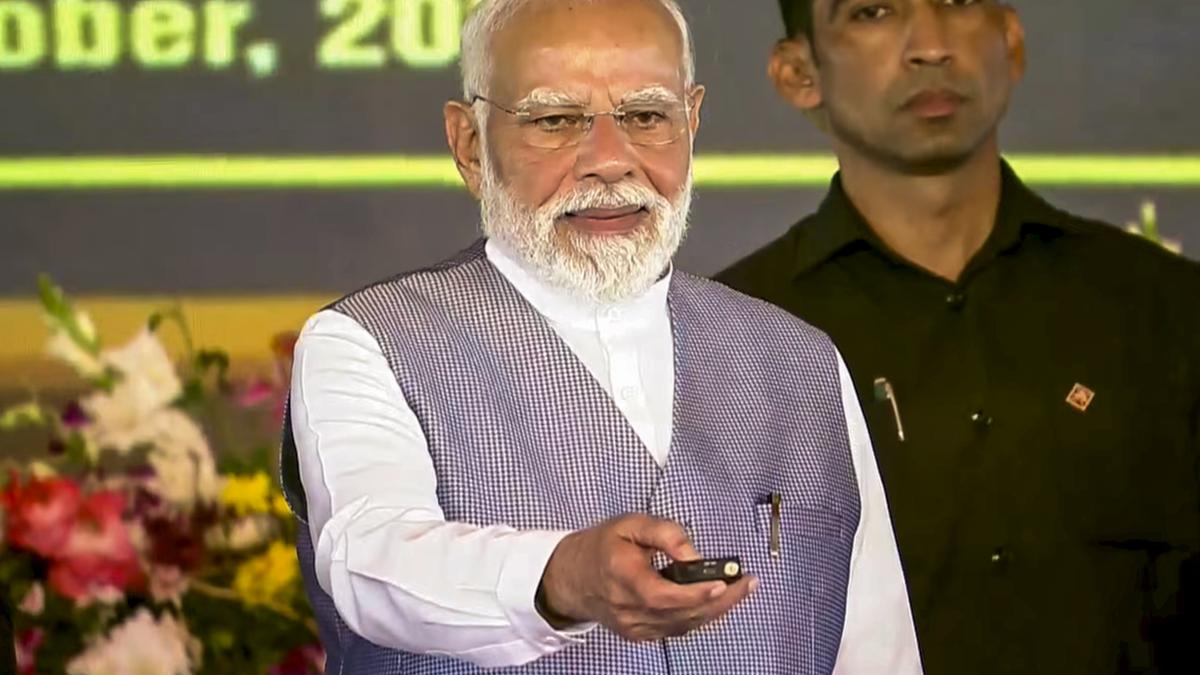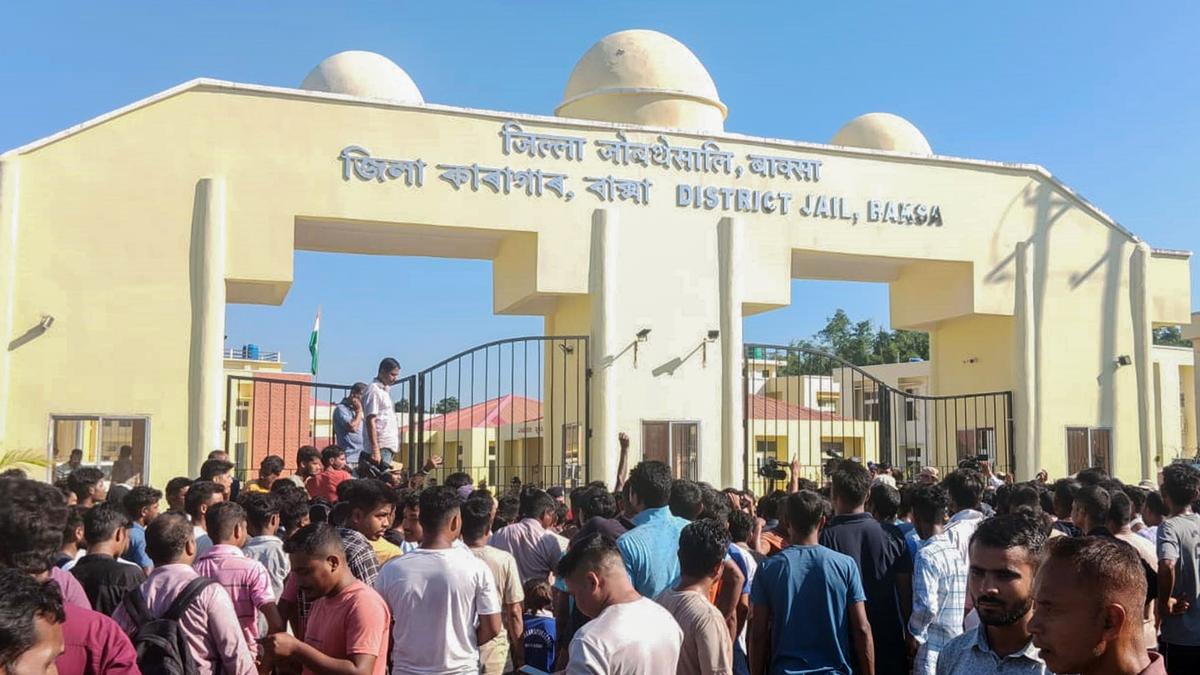ARTICLE AD BOX
Last Updated:October 16, 2025, 14:05 IST
Delhi-NCR’s air has stayed in the ‘poor’ category for three consecutive days. Here’s a guide to the Air Quality Index, how readings are taken, and what pollutants like PM2.5 mean

Vehicles ply on the Gurugram-Delhi Expressway amid low visibility. (PTI Photo)
For a third day in a row, Delhi woke up under a pale, hazy sky. The Air Quality Index, which measures how clean or polluted the air is, stood at 237 on Thursday morning, according to the Central Pollution Control Board (CPCB), placing the capital in the ‘poor’ category. Wednesday’s AQI was 210, and Tuesday’s was 211.
The India Meteorological Department (IMD) said the minimum temperature had dropped to 18.1 degrees Celsius, about one-and-a-half degrees below normal, while humidity hovered at 87 per cent at 8.30 am. Mist was observed in the morning, followed by clearer skies later in the day.
But that mist carried more than moisture. At five locations — Anand Vihar (345), DU North Campus (307), CRRI Mathura Road (307), Dwarka Sector 8 (314) and Wazirpur (325) — the air had already worsened to the ‘very poor’ range.
Delhi has 40 air quality monitoring stations, of which data from 38 were available.
On Wednesday, twenty stations reported AQI in the ‘poor’ category, while 13 stations fell into the ‘moderate’ range.
Behind these numbers lies a larger story of how the city’s air is measured, what those readings mean, and why every winter the same cycle of haze and health warnings returns.
What Is Air Quality Index?
The Air Quality Index is a single number that summarises how polluted the air is, or how polluted it’s expected to become. It combines data on major pollutants such as PM10, PM2.5, nitrogen dioxide, sulphur dioxide, carbon monoxide and ozone to help people understand how air quality affects their health.
The AQI scale runs from zero to 500. The higher the number, the worse the air. In India, the categories are: good (0–50), satisfactory (51–100), moderately polluted (101–200), poor (201–300), very poor (301–400), and severe (401–500).
India launched its colour-coded AQI system in 2014 under the Ministry of Environment, Forest and Climate Change, with technical input from IIT Kanpur. An expert group of doctors, scientists and advocacy groups designed it to make pollution data easier to interpret.
How Is AQI Calculated?
Every day, monitoring stations across India record concentrations of key pollutants. These raw values are then converted into sub-indices that reflect each pollutant’s impact on health. The pollutant with the highest sub-index defines the AQI for that location.
Both the CPCB and the US Environmental Protection Agency follow a 500-point scale, but India’s system applies health breakpoints suited to local conditions.
The process transforms complex data into a single, comparable number that tells the public when the air becomes unsafe to breathe. But to understand why that number rises so sharply in the colder months, it helps to know which pollutants are the main culprits.
The Danger Of PM2.5 And PM10
Among the pollutants tracked, PM2.5 is the most harmful. These are fine particles smaller than 2.5 micrometres, about three per cent of the width of a human hair. Because they are so tiny, they can bypass the nose and throat and travel deep into the lungs, even entering the bloodstream.
PM10 particles, which are up to 10 micrometres wide, mainly come from road dust and construction. But PM2.5 comes from combustion sources such as vehicles, power plants, industrial emissions and stubble burning. Long-term exposure to high PM2.5 levels has been linked to asthma, bronchitis, heart attacks and reduced lung function. It’s also the primary cause of Delhi’s persistent winter haze.
As these pollutants rise, the government steps in with short-term emergency responses to limit further damage.
GRAP-I Enforced In Delhi-NCR
As pollution levels rose this week, authorities activated emergency measures. On Tuesday, the Commission for Air Quality Management (CAQM) invoked Stage-I of the Graded Response Action Plan (GRAP) across the National Capital Region after Delhi’s average AQI touched 211.
Stage-I comes into play when AQI falls between 201 and 300. It requires agencies to implement 27 measures to prevent further deterioration. These include anti-smog guns, water sprinkling, dust suppression on roads and construction sites, and strict checks on open burning and vehicle emissions. Construction sites must follow strict dust-control guidelines, and local bodies are directed to monitor compliance.
In its order, CAQM said: “The AQI of Delhi has been recorded 211 on 14.10.2025 (‘Poor’ category). Furthermore, the forecast by IMD/IITM has predicted AQI to remain in the ‘Poor’ category in the coming days. The Sub-Committee, accordingly, decides to invoke all actions under Stage-I of GRAP in the entire NCR, with immediate effect."
Why AQI Matters For Health
The AQI isn’t just a number; it’s a snapshot of how safe or unsafe the air is to breathe. When air turns ‘poor’, sensitive groups such as children, the elderly, and those with asthma or heart conditions face higher risks of irritation and respiratory distress. Even healthy individuals may experience coughing or fatigue when pollution persists.
Authorities use the AQI to decide when to impose restrictions like GRAP, while the public can use it to plan outdoor activities or exercise schedules. Regular monitoring also helps identify which areas or pollutants need policy attention.
Where Can You Check AQI Levels?
Tracking air quality has become easier. The CPCB’s Sameer app and website provide live AQI readings for hundreds of stations across India. The SAFAR app (System of Air Quality and Weather Forecasting and Research) offers city-wise forecasts and hourly updates. The global platform AQICN.org tracks real-time data for Indian cities, and most smartphones now show AQI details through Google or weather widgets.
But an app only shows numbers; the haze above Delhi-NCR is what those numbers look like in the sky. Each winter, as pollution thickens and visibility falls, the AQI’s figures take on a visible form — the grey blanket of smog that defines the season.
What Is Smog?
Smog, a combination of smoke and fog, is what makes the air visibly grey during high-pollution days. There are two main types: photochemical smog and sulfurous smog. Photochemical smog, or Los Angeles smog, forms when sunlight reacts with nitrogen oxides and volatile organic compounds (VOCs) from fuels, paints and industrial sources.
Sulfurous smog, also called London smog, forms in cooler months when particulate matter, sulphur oxides and soot mix with fog. This is the kind currently affecting Delhi-NCR. The mix comes from vehicles, coal burning, industries and crop fires, all trapped close to the ground by low temperatures and weak winds.
According to the Centre for Science and Environment, Delhi’s air pollution causes between ten thousand and thirty thousand premature deaths each year. From harming lungs to damaging crops, the impact of this haze extends far beyond what meets the eye.
The Impact Of Smog On People And The Planet
Prolonged exposure to smog leads to coughing, wheezing, shortness of breath and irritation in the eyes and throat. It worsens asthma and heart disease and can increase the risk of cancer. The damage extends beyond humans: when sunlight is blocked, crop yields fall, and pollutants settling on leaves and soil harm ecosystems.
In Delhi, smog usually peaks around the festive season, when traffic surges, temperatures dip and stubble fires rise, creating the familiar toxic mix that reduces visibility and fills the air with fine dust.
Can Smog Be Controlled?
Controlling smog requires both collective and individual action. Authorities have promoted cleaner fuels, emission standards and a gradual shift to renewables. Under GRAP, bans are placed on coal and firewood in eateries, diesel generator use and open burning, while parking charges may be increased to discourage private vehicles.
Experts recommend longer-term fixes: replacing stubble burning with sustainable alternatives, cutting vehicle numbers through carpooling and public transport and expanding green spaces. On a personal level, residents can use air purifiers, wear N95 masks and avoid outdoor activity during peak hours.
Yet, even with these measures, the same haze reappears each winter.
Why The Pollution Cycle Repeats Every Year?
Despite repeated warnings and annual action plans, Delhi’s pollution cycle has become routine. Each winter, temperature inversion traps pollutants near the surface while wind speeds drop, preventing dispersion.
The city’s landlocked geography, combined with smoke drifting from crop-burning in Punjab and Haryana, amplifies the effect.
With Stage-I of GRAP now active and forecasts predicting continued ‘poor’ air, authorities are trying to prevent another slide into the ‘severe’ range, level that in past has forced school closures and emergency restrictions.
As Delhi moves deeper into winter, the battle against smog begins again.

Karishma Jain, Chief Sub Editor at News18.com, writes and edits opinion pieces on a variety of subjects, including Indian politics and policy, culture and the arts, technology and social change. Follow her @kar...Read More
Karishma Jain, Chief Sub Editor at News18.com, writes and edits opinion pieces on a variety of subjects, including Indian politics and policy, culture and the arts, technology and social change. Follow her @kar...
Read More
First Published:
October 16, 2025, 14:04 IST
News explainers Air Quality Continues To Worsen In Delhi-NCR: A Guide To The AQI And Pollutants You’re Breathing
Disclaimer: Comments reflect users’ views, not News18’s. Please keep discussions respectful and constructive. Abusive, defamatory, or illegal comments will be removed. News18 may disable any comment at its discretion. By posting, you agree to our Terms of Use and Privacy Policy.
Read More

 3 hours ago
5
3 hours ago
5









 English (US) ·
English (US) ·